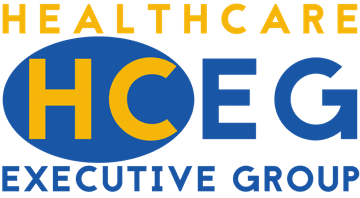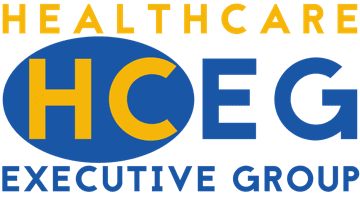
This blog post provides an overview of webinar highlights of the discussion between Kim, Ferris and David, their responses to attendee questions and some additional information to be shared in a future blog post. The webinar presentation materials and a recording of webinar can be found here.
Note: Verbatim responses are included in quotations and paraphrased responses are not quoted.
Topic #1: Most Interesting Items on 2018 HCEG Top 10 List
Kim asked David and Ferris which three items on the 2018 HCEG Top Ten list three areas were of most interest?
David:
“Of course, they’re all very interesting to me. It’s been a very much a part of my life for the past few years being involved in Healthcare Executive Group and obviously being part of the industry. But really, I think the top three on the list are the top three for a reason. I look at these as the three pillars of value-based care.”
“Any value-based program needs to ensure that it’s that it’s a win-win-win for the payer, for the provider and for the member, in order for it to be sustainable. So, in order for it to be a win-win-win, you really need these three pillars. You need alignment and financial incentives. You need to have strong payer provider integration, or cooperation really, to create a true partnership between the caregiver and the payer. But you also need to have the provider and the payer partner on fundamentally changing the way care is delivered.”
Ferris:
“I don’t think we should minimize the topic of costs in healthcare and that probably shows up in the Top Ten most significantly around Cost Transparency (Item #4). A lot of that discussion in the recent months has been around Addressing Pharmacy Costs (item #9) but it’s not exclusive to that.”
“But here in the HCEG Top Ten is also cyber security (Item #6) and it’s interesting to me that it – like the clinical data and analytics (Item #1) you mentioned David – cuts across almost all of the issues. If we can’t assure the consumer of some sort of privacy around their data and some security, then we have an issue. Cybersecurity was not on the HCEG Top Ten list for many years going back. Three or four years ago it came up to the top of the list.
My top three would also have to include that bigger bucket of consumerism. It’s on the list as Total Consumer Health (Item #5) and Harnessing Mobile Health Technologies (Item #8). And also, The Engaged Digital Health Consumer (Item #10).
“We are in a major transformation of healthcare from the consumer to the buyer being the employer to the consumer. So, I would add those three Kim to the list that David has pointed out.
Keeping Track of David’s & Ferris’s Top 3 Top 10 Picks?
| David Gallego’s Top 3 Picks | Ferris Taylor’s Top 3 Picks |
| #1 – Clinical and Data Analytics | #5 – Total Consumer Health |
| #2 – Population Health Services Organizations | #8 – Harnessing Mobile Health Technology |
| #3 – Value-Based Payments | #10 – The Engaged Digital Consumer |
Topic #2: Healthcare Consumerism
Kim asked Ferris and David to give their perspective on consumerism and what they’re seeing in the industry absolutely?
David:
“So fundamentally, I think consumerism is about giving people what they want. So, at a high level that means affordable, accessible high-quality care that improves their overall quality of life. That’s simplistic in some ways but I think everyone could agree that’s what people want of health care. You must look at a more granular level as to what consumers want and need as they can vary significantly. And then, so from that perspective, consumerism really needs to be about customization.”
Customized care means the right service and/or right content is delivered at the right time, at the right place and by the right caregiver.
- It’s about 24-hour access to care.
- It’s about multi-channel access to information and services.
- It’s about providing relevant content to current or predicted life events.
- It’s about customized care plans to take individual patient specific conditions, genomic, social determinants all into consideration.
- It’s about empowering and enabling the consumers so they have the right amount of information to make the right decisions for their health, cost, and quality etc.
Ferris:
“There’s a lot of dimensions of the cost equation, of the price equations that our health care consumers, our members, and our patients just don’t understand. It isn’t consistent with what they experience in the other aspects of their life and I think that takes me to the consumer discussion. And that’s clearly one of my top three.”
“But we are in a major transformation of healthcare from the employer being the buyer to the consumer being the buyer. In December, the American Health Insurance Plans (AHIP) association had an entire three-day conference on consumer experience and digital health. In a nutshell, it really stuck in my mind that as health plans, providers and technology vendors really need to stop thinking like health plans, providers and technology vendors; and start thinking like consumers. People don’t look at healthcare as the only thing in their lives.”
“It’s our responsibility as healthcare stakeholders to find a way that our healthcare messages and our healthcare initiatives can fit into the life flow of our members and our patients; and that of their families, their work, their community and what we need to weave into our initiatives the day to day things that we know, if consumers did them.”
Analogy About Healthcare Spending by David Gallegos
David shared an interesting, very accurate and rather amusing analogy about healthcare spending. “$16 Worth of Groceries for $10!”
Topics Addressed in Next Post: Cybersecurity & Rising Pharmacy Costs
The above represents just a small portion of what Kim, Ferris and David discussed in the first half of the webinar. For more insight on any particular area of interest, you can watch the webinar recording and/or read the transcript here.
In a following post, highlights from the second half will be shared. These include responses to the following two topics posed by Kim Sinclair to Ferris Taylor and David Gallegos:
How are you seeing cyber security and cyber threats impact healthcare organizations beyond the tactical day-to-day front prevention activities?
What are your thoughts about what we as healthcare leaders can do about rising pharmacy costs?
Connect with the HealthCare Executive Group
If you want to learn more about healthcare in the United States and connect with like minded thought-leaders, consider subscribing to our eNewsletter, follow us on Twitter, and connect with us on LinkedIn and Facebook. Better yet, join our unique organization of healthcare executives and thought leaders.





[…] Recapping ‘The 2018 HCEG Top 10 Healthcare Opportunities, Challenges & Issues’ Webinar – P… […]